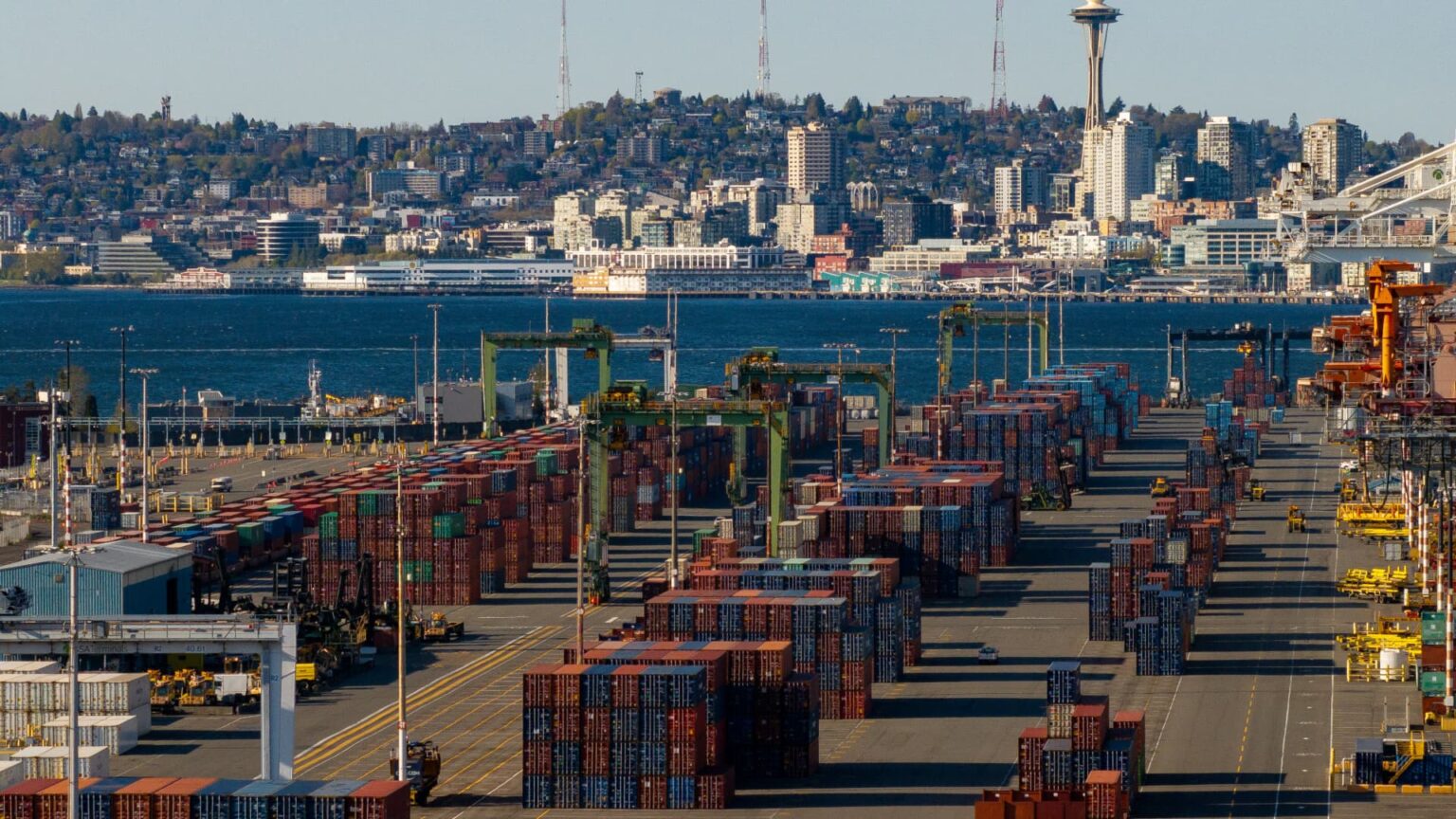Shipping containers at the Port of Seattle on April 16, 2025.
David Ryder/Bloomberg via Getty Images
Tariffs levied by President Donald Trump during his second term would hurt the poorest U.S. households more than the richest over the short term, according to a new analysis.
Tariffs are a tax that importers pay on foreign goods. Economists expect consumers to shoulder at least some of that tax burden in the form of higher prices, depending on how businesses pass along the costs.
In 2026, taxes for the poorest 20% of households would rise about four times more than those in the top 1%, if the current tariff policies were to stay in place. Those were findings according to an analysis published Wednesday by the Institute on Taxation and Economic Policy.

For the bottom 20% of households — who will have incomes of less than $29,000 in 2026 — the tariffs will impose a tax increase equal to 6.2% of their income that year, on average, according to ITEP’s analysis.
Meanwhile, those in the top 1%, with an income of more than $915,000 a year, would see their taxes rise 1.7% relative to their income, on average, ITEP found.
Economists analyze the financial impact of policy relative to household income because it illustrates how their disposable income — and quality of life — are impacted.
Taxes by ‘another name’
“Tariffs are just taxes on Americans by another name,” researchers at the Heritage Foundation, a conservative think tank, wrote in 2017, during Trump’s first term.
“[They] raise the price of food and clothing, which make up a larger share of a low-income household’s budget,” they wrote, adding: “In fact, cutting tariffs could be the biggest tax cut low-income families will ever see.”
Meanwhile, there’s already evidence that some retailers are raising costs.
A recent analysis by the Yale Budget Lab also found that Trump tariffs are a “regressive” policy, meaning they hurt those at the bottom more than the top.
More from Personal Finance:
Consumers are spending as trade wars raise recession odds
Consumers make financial changes in response to tariffs
Can tariff revenue replace income tax?
The short-term tax burden of tariffs is about 2.5 times greater for those at the bottom, the Yale analysis found. It examined tariffs and retaliatory trade measures through April 15.
“Lower income consumers are going to get pinched more by tariffs,” said Ernie Tedeschi, director of economics at the Yale Budget Lab and former chief economist at the White House Council of Economic Advisers during the Biden administration.
Treasury Secretary Scott Bessent has said tariffs may lead to a “one-time price adjustment” for consumers. But he also coupled trade policy as part of a broader White House economic agenda that includes a forthcoming legislative package of tax cuts.
“We’re also working on the tax bill and for working Americans, I believe that the reduction in taxes is going to be substantially more,” Bessent said April 2.
It’s also unclear how current tariff policy might change. The White House has signaled trade deals with certain nations and exemptions for certain products may be in the offing.
Trump has imposed a 10% tariff on imports from most U.S. trading partners. Mexico and Canada face 25% levies on a tranche of goods, and many Chinese goods face import duties of 145%. Specific products also face tariffs, like a 25% duty on aluminum, steel and automobiles.
https://www.cnbc.com/2025/04/25/trump-tariffs-taxes-poor-rich.html


